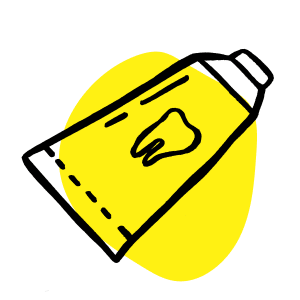What is a
Tooth Abscess?
Tooth Abscess?
Find out everything you need to know about the cause and treatment of a tooth abscess.
Our teeth are amazing structures. They are composed of multiple layers, each with a specific structure and a very specific purpose. While the outer layers are mainly composed of minerals, serving to protect the tooth from both the forces of chewing and biting, as well as the bacteria present in the mouth, the inner layers are softer, and the innermost layer (known as the tooth nerve or pulp) is mainly composed of blood vessels, nerves and other cells and soft tissues. When that layer is infected with bacteria and left without treatment for a while, these soft contents liquefy and give rise to what is known as a tooth abscess or a dental abscess.
An abscess is an area of infection that is formed due to the death and liquefaction of cells and soft tissues in a specific area. When that happens related to a tooth or its surrounding structures, it is known as a dental abscess. It is basically a sack filled with pus that resulted from the liquefaction of the pulp cells.
The main reason for any abscess is a bacterial infection, and dental abscesses are no different. The process of decay starts when the bacteria produce their acids and toxins when the food
Find your new dentist in minutes with upfront quotes for an EMERGENCY VISIT
Search, Book and Manage your oral health for FREE, with AirSmile!
Find emergency dental services, on AirSmile
The moment you notice an issue it is best to contact the emergency dentist right away before things develop into a situation that could cause you severe pain, threaten your overall health or result in the loss of a tooth.
It is recommended you seek consultation with an emergency dentist if you are experiencing any of the following symptoms;
Pain, swelling, fever, pain on biting, broken tooth, bleeding gum or a chance in the colour of your tooth or gum.

Maintain function

Keeps the other teeth healthy

Better
Oral Health

Continue eating what you like

Best long-term care

Gets you out of pain, fast!






Understanding your condition is the
key to making the right choices for you
No, it needs immediate treatment to drain the pus and eliminate the bacteria. That being said, it usually fluctuates between acute and chronic phases. The acute phase is usually the one with the symptoms, while the chronic is usually symptom-free, but that doesn’t mean the problem doesn’t need treatment, as the chronic can turn to acute at any time.
Symptoms of a dental abscess are usually widespread and poorly localized (meaning it is very difficult for you to pinpoint which tooth is the diseased one). However, the swelling is a very obvious sign, and when the swelling enlarges, it means the abscess is enlarging and spreading.
Ice and cold compresses are generally better for swellings, but neither heat nor cold does any effect on the abscess itself.
No, an abscess can never be cured without intervention from a dentist. The symptoms could subside and the acute phase could change to a chronic phase, but the disease itself will remain present until a dentist drains the pus, eliminates the cause of the problem and repairs the tooth involved.
An acute tooth abscess is definitely an emergency. It is often accompanied by severe pain, as well as swelling that could compromise the airway and some very important structures.